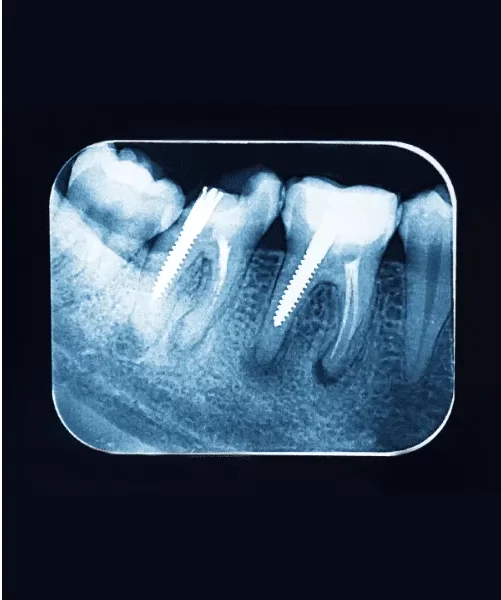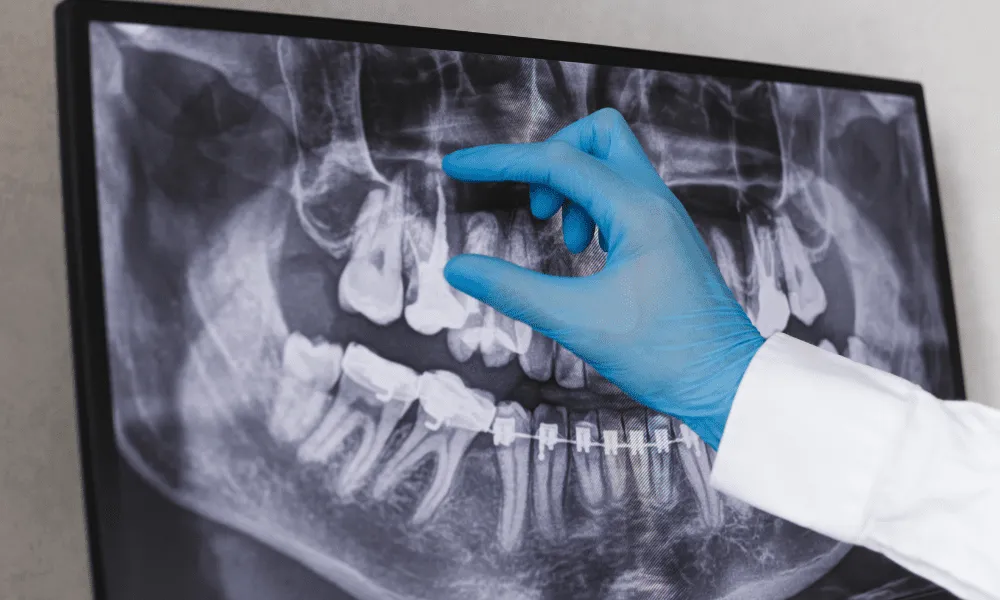Root canal treatment is a dental procedure aimed at treating infections in a tooth’s pulp. For the success of this complex process, precise diagnosis and careful treatment planning are crucial. X-rays for root canal treatments are instrumental in meeting these objectives. This detailed guide will explore the importance, varieties, and analysis of X-rays within the scope of root canal treatments.
Table of Contents
- Understanding the Role of Root Canal X-rays
- Types of Root Canal X-Rays: Uses, Advantages, and Disadvantages
- When are Root Canal X-rays Recommended?
- The Root Canal X-ray Procedure
- Interpreting Root Canal X-rays
- Root Canal X-rays and Treatment Success
- Challenges and Limitations of Root Canal X-rays
- Root Canal X-rays in Pediatric Dentistry
- Potential Risks and Complications Associated with Root Canal X-Rays and How to Minimize Them
- Patient Education and Informed Consent
- Final Words
- Reference
Understanding the Role of Root Canal X-rays
Root canal X-rays are vital tools for dentists. They provide a clear, detailed view of the areas of your teeth and gums that can’t be seen during a standard dental checkup. Let’s break down how root canal X-rays help in different situations:
Detecting Tooth Infections and Abscesses
- What it does: X-rays reveal infections that have spread to the root of a tooth or the surrounding bone.
- Why it’s important: Infections can lead to abscesses, which are painful pockets of pus. These might not be visible without an X-ray.
- How it helps: By identifying the extent of the infection, the dentist can plan the right treatment, such as a root canal, to save the tooth.
Assessing Tooth Trauma
- What it does: X-rays help assess the damage from tooth injuries like cracks or chips.
- Why it’s important: Some injuries may reach the tooth’s pulp (the soft tissue inside the tooth), which could require a root canal.
- How it helps: X-rays allow the dentist to see the full extent of the trauma and decide the best way to treat it.
Identifying Tooth Decay
- What it does: X-rays detect decay that isn’t visible during a regular dental exam, such as between teeth or under fillings.
- Why it’s important: Hidden decay can worsen if left untreated, leading to more serious dental problems.
- How it helps: Early detection with X-rays enables the dentist to treat decay before it causes further damage.
Evaluating Impacted Teeth
- What it does: X-rays show whether a tooth is impacted, meaning it hasn’t emerged properly and is stuck in the gum or bone.
- Why it’s important: Impacted teeth, like wisdom teeth, can cause pain, infection, or damage to nearby teeth.
- How it helps: The dentist can use X-rays to decide whether to monitor the tooth or remove it.
Monitoring Children’s Permanent Teeth Development with Root canal X-ray
- What it does: X-rays track how children’s permanent teeth are growing and developing.
- Why it’s important: X-rays can identify issues like overcrowding, misalignment, or missing teeth early on.
- How it helps: Early detection allows the dentist to intervene if necessary, preventing bigger problems in the future.
Planning Root canal X-ray for Extractions, Implants, or Surgeries
- What it does: X-rays give a detailed view of the tooth’s position and the surrounding bone and tissues.
- Why it’s important: This information is crucial for safely planning procedures like tooth extractions, dental implants, or other oral surgeries.
- How it helps: With X-rays, the dentist can plan the procedure accurately, reducing risks and improving outcomes.
Checking for TMJ Problems
- What it does: X-rays help evaluate the temporomandibular joint (TMJ), which connects your jaw to your skull.
- Why it’s important: TMJ issues can cause jaw pain, headaches, and other symptoms, and X-rays can show if there’s arthritis or misalignment.
- How it helps: Understanding the condition of the TMJ helps the dentist create a targeted treatment plan to relieve symptoms.
By providing these crucial insights, root canal X-rays help dentists diagnose problems accurately and choose the best treatments to keep your teeth and gums healthy.


